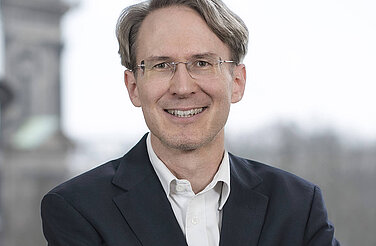Green hydrogen clusters in Europe and China
Cooperation on hydrogen industrial clusters between China and Europe could help move the clean energy transition agenda forward.

Hydrogen produced with renewable resources will become cheaper than fossil fuels by 2030 across a range of applications. Green hydrogen will be used to replace fossil fuels in hard-to-abate sectors.
After many years of research, development and advocacy, the hydrogen economy is taking shape. This momentum was sparked by expectations that “green” hydrogen, which is produced with renewable resources, will become cheaper than fossil fuels by 2030 across a range of applications. While most research suggests that the majority of fossil molecules in energy applications will be replaced with clean electrons rather than green molecules, it is becoming clear that direct electrification of everything would be technically impractical and economically burdensome.
Spearheading efforts to scale-up hydrogen, the EU – as well as individual member states including Germany, France, the Netherlands, Poland, Portugal and Spain – have already presented their hydrogen strategy documents, with more still under development. Central to EU hydrogen strategy is a massive deployment of electrolysers, as well as the need to import green hydrogen from abroad. To this end, the EU is considering the “Hydrogen Backbone”, with a project that would convert 23,000 km, or about 10% of current gas pipeline networks to carry pure hydrogen instead.
The Backbone would be 75% based upon repurposed gas pipelines, and 25% on new, purpose built hydrogen pipelines. But estimates of future hydrogen demand can vary, by almost an order of magnitude, so without careful evaluation of future demand, the EU risks exchanging stranded gas infrastructure for stranded hydrogen assets.
China is the largest hydrogen producer and consumer in the world, the central government first endorsed hydrogen in the 2019 State Council work report. Since then, at least 23 out of 31 provincial level regions in China have already issued development plans for hydrogen energy and fuel cell vehicles, and more than 10 of them included hydrogen development in their 14th Five Year Plan for Economic and Social Development and the Long-Range Objectives Through 2035.
Various levels of Chinese government fully embrace the concept of hydrogen industrial clusters and are already creating them: from East China (Shanghai and adjacent regions) to Central China (Wuhan and beyond), Southern China (Guangdong and beyond), and the Beijing-Tianjin-Hebei region. Even at provincial (such as Hebei) and lower local government level (such as Foshan City in Guangdong), the concept of industrial clusters has been integrated into hydrogen plans.
China’s eager embrace of hydrogen industrial clusters is largely incentivized by the country’s ability to significantly bring down unit manufacturing cost through industrial clusters. Following a rapid industrialization process starting in 1978, China has now formed a comprehensive modern industrial system comprising 41 large industrial categories, 207 medium ones and 666 small ones, thus is the only country in the world that has all the industrial categories based on the industrial classification of the United Nations. Taking capital expenditure of alkaline electrolysis systems and coal-fired power plants as examples, Chinese manufacturers and contractors possess significant cost advantages against their counterparts in western countries. The importance of industrial clusters in achieving economies of scale is clear.

Similar to the EU, China is currently experiencing a wave of interest in hydrogen. Unlike the EU, national coordination of the hydrogen economy is noticeably inadequate; China has not yet issued a national hydrogen strategy. China could thus benefit enormously from insights gathered in the European (especially German) debates. Ideally, mutually beneficial international cooperation on hydrogen industrial clusters between China and Europe could help move the clean energy transition agenda forward.
Quantifying European hydrogen demand and mapping industrial clusters
Assuming that electricity will replace much of current demand for natural gas, Agora Energiewende, an energy transition think tank based in Berlin, together with its partner AFRY Management Consulting, have taken up the task of estimating inescapable industrial hydrogen demand, which arises from applications where electricity would not be a practical solution in the foreseeable future. In other words, we have purposely assumed that sub-sectors where direct electrification is feasible would opt for these technologies in the interest of efficiency.
First, we calculated the trajectories for such hydrogen demand up to 2050, by which time refineries (currently the biggest hydrogen buyer) will have been phased out in the EU. The three biggest consumers by mid-century are projected to be steel, ammonia, and plastics, which are applications where hydrogen is used primarily as feedstock instead of energy carrier.

Next, we mapped these demand centres up to 2050. The biggest demand hub is found in North Rhine-Westphalia (Germany), Flanders (Belgium), and the Netherlands, where a large cluster of chemical and petrochemical installations is already located, along with steel plants. Because other smaller clusters could be considered potentially disparate, we then investigated whether these demand levels are likely to warrant hydrogen pipeline connections.

Based on envisaged feedstock and chemical reagent demand for hydrogen, Agora identified four industrial clusters where there is a clear, no-regret case for repurposing or building a hydrogen pipeline network. These clusters are ideally suited to serve as anchor points for hydrogen demand, from which sprawling hydrogen octopuses of pipelines might eventually emerge, should hydrogen steal the hearts of consumers.

Adding potential hydrogen demand from other hard-to-abate applications in power, aviation and shipping sectors is likely to strengthen the case for a more expansive network of hydrogen pipelines.
However, total European demand for green hydrogen from all sectors in 2050 is likely to be in the order of 1,000-2,000 TWh per year, the equivalent of only a fraction of the current natural gas consumption of 4,600 TWh. To achieve climate neutrality by mid-century, the EU should therefore focus on developments along early opportunity corridors identified in our study. By comparison, China should start mapping its likely corridors of eventual clean hydrogen demand – based on probable levels that emphasize electrification, with hydrogen filling in the gaps towards carbon neutrality before 2060.
This text was originally posted on the World Economic Forum's website and is reposted here with kind permission.



